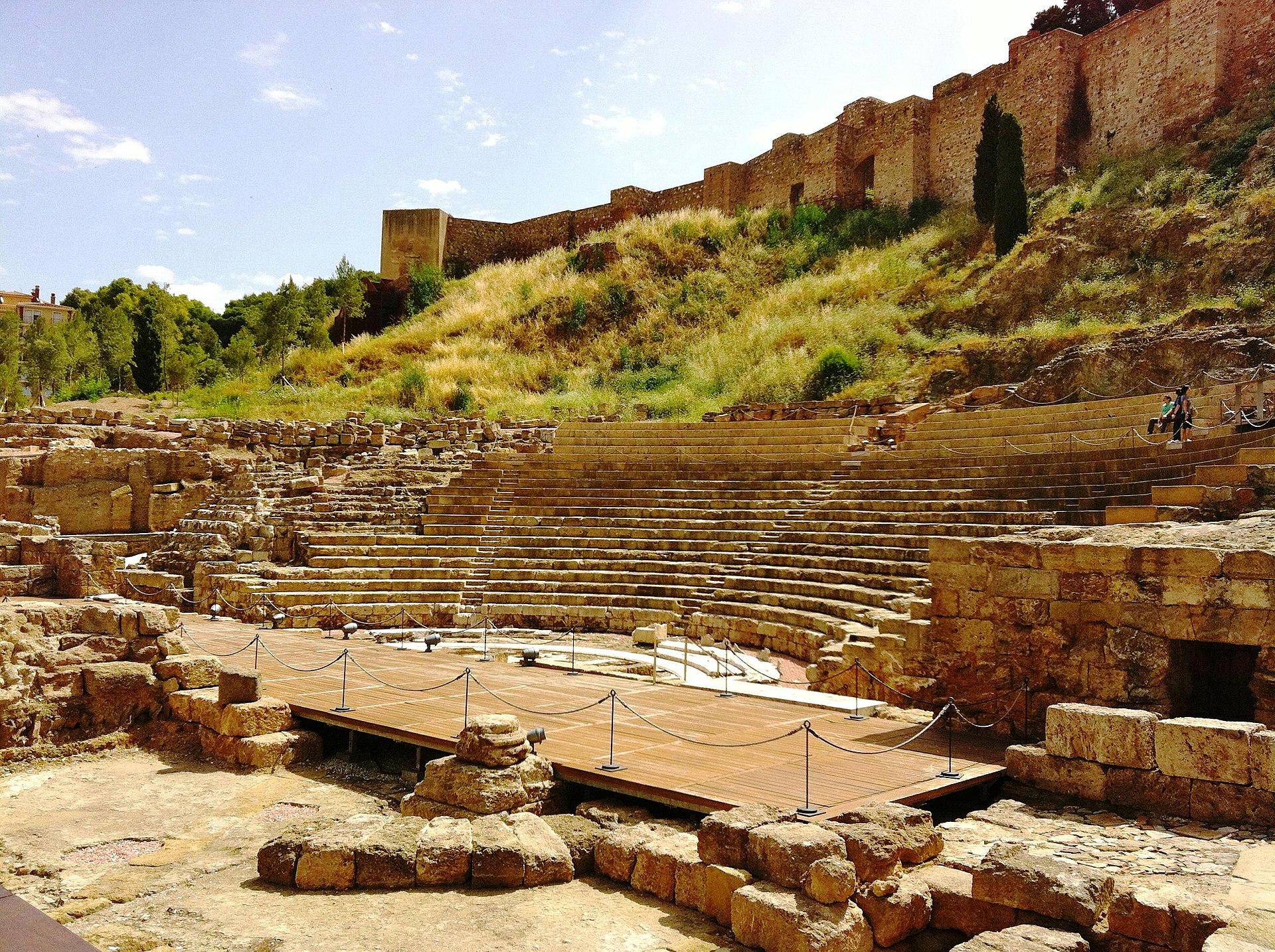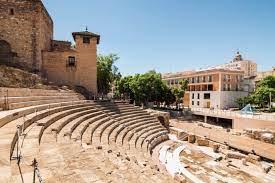


Roman Theatre
The Roman Theatre is the archaeological remains of the theatre of ancient Malaga and the main preserved vestige of the Roman presence in Malaga. It was discovered in 1951 during the course of works for the creation of a garden area. An archaeological site that you cannot miss on your visit to our city.
![]() Centro histórico
Centro histórico
![]() TRomanoMalaga.aaiicc@juntadeandalucia.es
TRomanoMalaga.aaiicc@juntadeandalucia.es
- PRICE: Free of charge
- OPENING HOURS: Tuesday to Saturday from 10:00 to 18:00 h.
Sundays and public holidays from 10am to 4pm.
Closed: 1 and 6 January, 1 May, 24, 25 and 31 December. National, regional and/or local holidays, please consult by telephone or e-mail.
It is not necessary to book a ticket for the free visit. For guided tours, booking is recommended by calling 951 501 115.
The Roman Theatre of Malaga is the main preserved vestige of the Roman presence in the city. It was built in the early years of the 1st century AD, that is, at the beginning of the Empire, at a time when numerous public buildings were being constructed in order to turn the city into the image of the new political, economic and religious life.
Prior to the theatre, this space was the site of a baths from the Republican period, of which part of an opus spicatum floor has survived. The theatre was built, in part, over the structures of these baths, which at this time were moved to a nearby site.
The Roman Theatre of Malaga is a medium-sized theatre that conserves a large part of the cavea or tiers, the orchestra richly decorated with large marble slabs, and the scaena, in which today the floor has been reproduced with a wooden floorboard like the one it would have had at the time of its use. The scenic apparatus closed at the back with an ornamental façade decorated with openings, columns and sculptures, several examples of which have been recovered.
From a constructive point of view, it is a mixed construction, since on the one hand it uses part of the hillside to build a large section of the cavea (seating tiers), in the style of the Greek theatres, and the rest is built on artificial foundations.
The theatre was in use for two centuries, although by the end of the 2nd century AD it was in very short supply. It was finally abandoned at an undetermined point in the 3rd century AD. After the building was plundered and clogged, the entire area was occupied by structures related to the salting industry. A series of basins have survived, which can be seen under the glass pyramid in Calle Acazabilla, where, apart from the salted fish, the famous garum was made.
From the 5th century AD onwards, a new change of use took place. The area of the Roman theatre appears as a necropolis from which a series of double-sided tile burials have been excavated. Some tombs are preserved at a higher level than the theatre, to the west of the interpretation centre.
For centuries the Roman theatre of Malaga was hidden beneath the streets and houses that existed on the slopes of the Alcazaba. In 1940 a building was constructed to house the Palace of Archives, Libraries and Museums of Malaga, known as the Casa de la Cultura. During the landscaping work carried out in 1951 in front of the main entrance to the building, a monumental construction came to light, which was initially interpreted as one of the gates of the Roman wall. With the appearance of a series of staggered tiers following the arch, it was established that it was a Roman theatre, and that the vaulted construction was an Aditus Maximus and the tiers corresponded to the cavea. The rest of the theatre had remained under the foundations of the house of culture.
A period of several decades began in which periods of excavation, consolidation and constant debate followed one another, concluding with the demolition of the house of culture, the extensive excavation of the entire site and the enhancement of the archaeological site. The archaeological site is currently open to the public from Tuesday to Sunday and consists of an interpretation centre and the site itself.